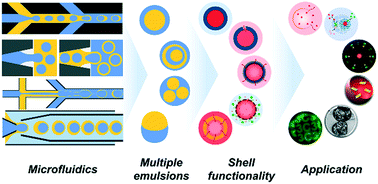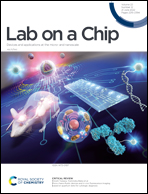Recent advances in the microfluidic production of functional microcapsules by multiple-emulsion templating
Abstract
Multiple-emulsion drops serve as versatile templates to design functional microcapsules due to their core–shell geometry and multiple compartments. Microfluidics has been used for the elaborate production of multiple-emulsion drops with a controlled composition, order, and dimensions, elevating the value of multiple-emulsion templates. Moreover, recent advances in the microfluidic control of the emulsification and parallelization of drop-making junctions significantly enhance the production throughput for practical use. Metastable multiple-emulsion drops are converted into stable microcapsules through the solidification of selected phases, among which solid shells are designed to function in a programmed manner. Functional microcapsules are used for the storage and release of active materials as drug carriers. Beyond their conventional uses, microcapsules can serve as microcompartments responsible for transmembrane communication, which is promising for their application in advanced microreactors, artificial cells, and microsensors. Given that post-processing provides additional control over the composition and construction of multiple-emulsion drops, they are excellent confining geometries to study the self-assembly of colloids and liquid crystals and produce miniaturized photonic devices. This review article presents the recent progress and current state of the art in the microfluidic production of multiple-emulsion drops, functionalization of solid shells, and applications of microcapsules.



 Please wait while we load your content...
Please wait while we load your content...